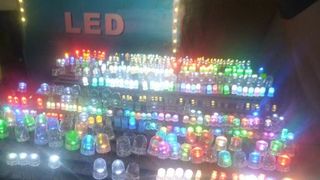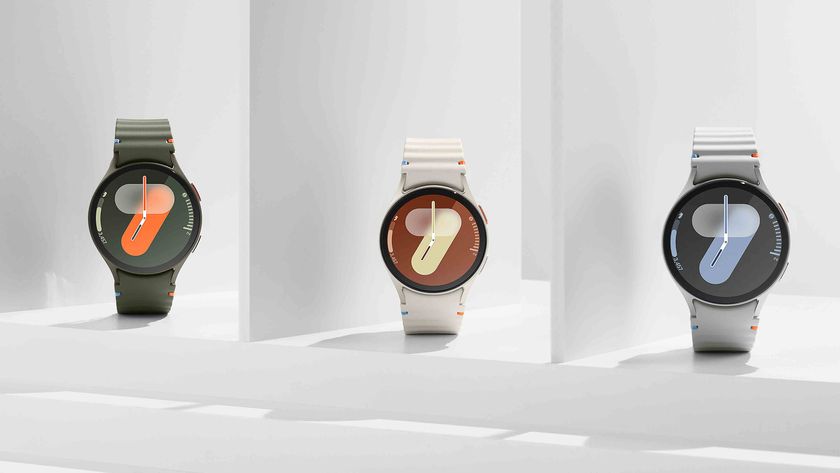Could Wi-Fi be replaced by Li-Fi?
Will Wi-Fi routers be outdone by a network of smart light bulbs?
Li-Fi's limitations
One of the main limitations of Li-Fi is the need for a line-of-sight link; the device needs to 'see' the light source, which makes it unsuitable for use in smart cities, or over large networks where buildings or other objects could get in the way.
"Its main physical limitation is that visible light is used, so requires photons to be emitted and detected, thus a mobile that is in a shadow may not work," says Ferguson. Li-Fi signals can also be interrupted by bright sunlight, which again makes it less than reliable outdoors. "It can't be used in direct sunlight, or in other conditions with harsh lighting, as the photodetectors will not be able to detect the modulating light waves," adds Attias, who thinks that Li-Fi would require much investment in lighting and wiring infrastructure.
The one-way link
Unlike the IP integration that Wi-Fi creates, Li-Fi's physical limitations mean that it's primarily seen as ideal only for making a one-way data dump, and not as a means of communication. "Li-Fi is generally conceived as a one-way content delivery mechanism, and IP requires two-way communication," says Ferguson.
However, this could mean a hybrid Wi-Li-Fi future is possible. "Utilising Wi-Fi as the upstream from a device may make this less of a problem," adds Ferguson, suggesting that it's much like early satellite broadband that relied on a dial-up connection to send the acknowledgments for receiving data packets.

Could Li-Fi prove expensive?
"Many of the mathematical techniques are similar to those used in existing Wi-Fi systems, but cost will ultimately depend on the volume of sales," says Ferguson, who points out that when it first appeared, Wi-Fi was very expensive. Even now, top-of-the-range 802.11ac Wi-Fi routers are still much more expensive than basic models.
"To keep costs reasonable, it's possible that the first commercial versions of Li-Fi may be a lot slower than the lab demonstrations seen so far," adds Ferguson.
Wi-Fi's thriving
While Li-Fi sits in research labs, Wi-Fi is booming. Capacity problems may loom in the middle-distance, but with the explosion of the IoT, Wi-Fi is doing very nicely. The industry surpassed 10 billion Wi-Fi-enabled devices shipped cumulatively in early 2015, according to ABI Research – over half were dual-band (2.4GHz and 5GHz) – and Wi-Fi gadgets are expected to boom over the next five years thanks to cars and a massive increase in people getting online. Meanwhile, there are other variants of Wi-Fi such as HaLow, WeGig and LTE-U.
Are you a pro? Subscribe to our newsletter
Sign up to the TechRadar Pro newsletter to get all the top news, opinion, features and guidance your business needs to succeed!
Where next for Li-Fi?
So will there be enough room for Li-Fi to see the light? Probably, but it could be a niche product at first. "So far a lot of the chatter is around the technology replacing techniques such as Bluetooth-enabled advertising displays," says Ferguson, but there's a more general advantage in homes, too. "One of the biggest advantages of Li-Fi as a concept is its potential to eradicate congested radio waves and wireless dead zones," says Attias, who thinks it could catch-on where Wi-Fi is restricted.
"Although it will be a considerable amount of time until Li-Fi comes to the forefront, there is a great deal of potential for it to be used on aircrafts and in hospitals," says Attias on what could very well be Li-Fi's 'killer app'. That reading lamp above airline seats could yet prove the death of inflight entertainment – and the birth of a new light-powered internet.
Jamie is a freelance tech, travel and space journalist based in the UK. He’s been writing regularly for Techradar since it was launched in 2008 and also writes regularly for Forbes, The Telegraph, the South China Morning Post, Sky & Telescope and the Sky At Night magazine as well as other Future titles T3, Digital Camera World, All About Space and Space.com. He also edits two of his own websites, TravGear.com and WhenIsTheNextEclipse.com that reflect his obsession with travel gear and solar eclipse travel. He is the author of A Stargazing Program For Beginners (Springer, 2015),











